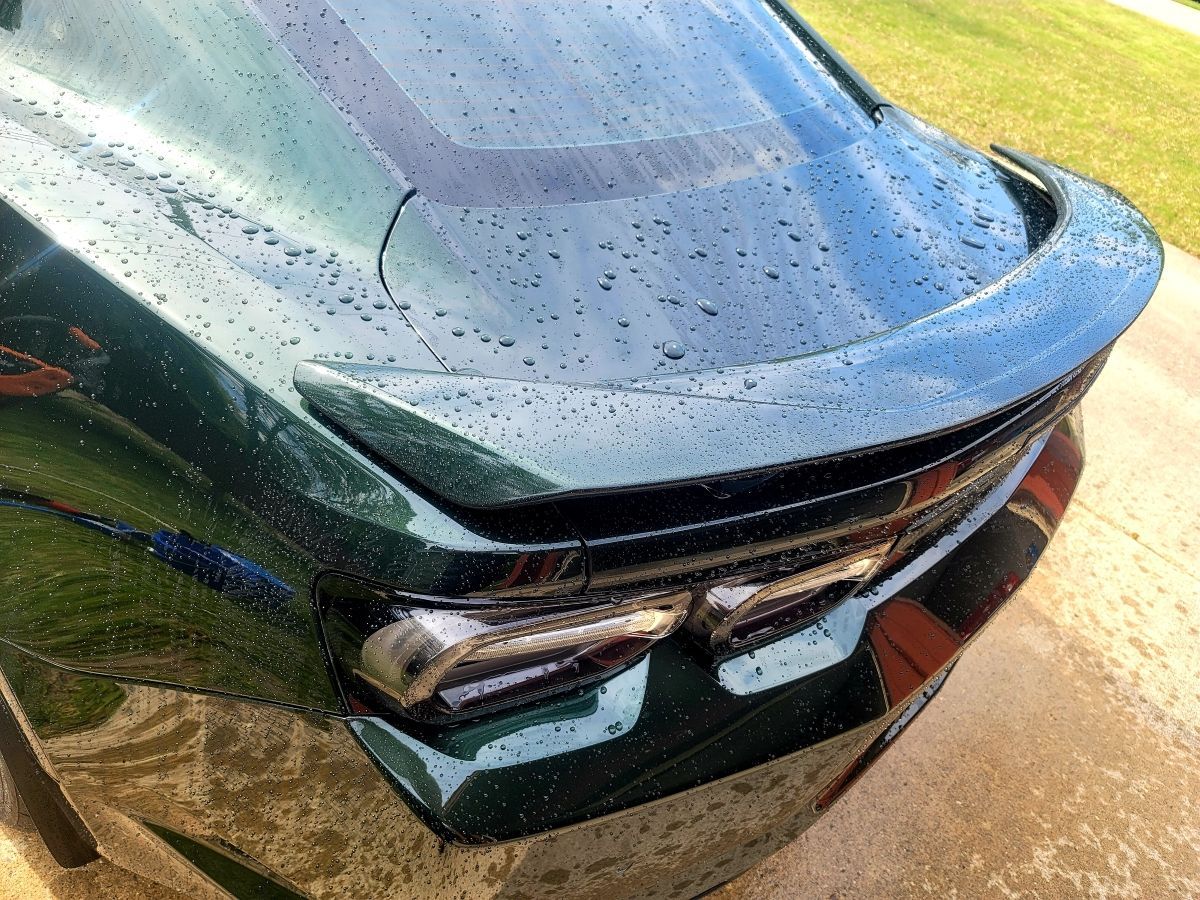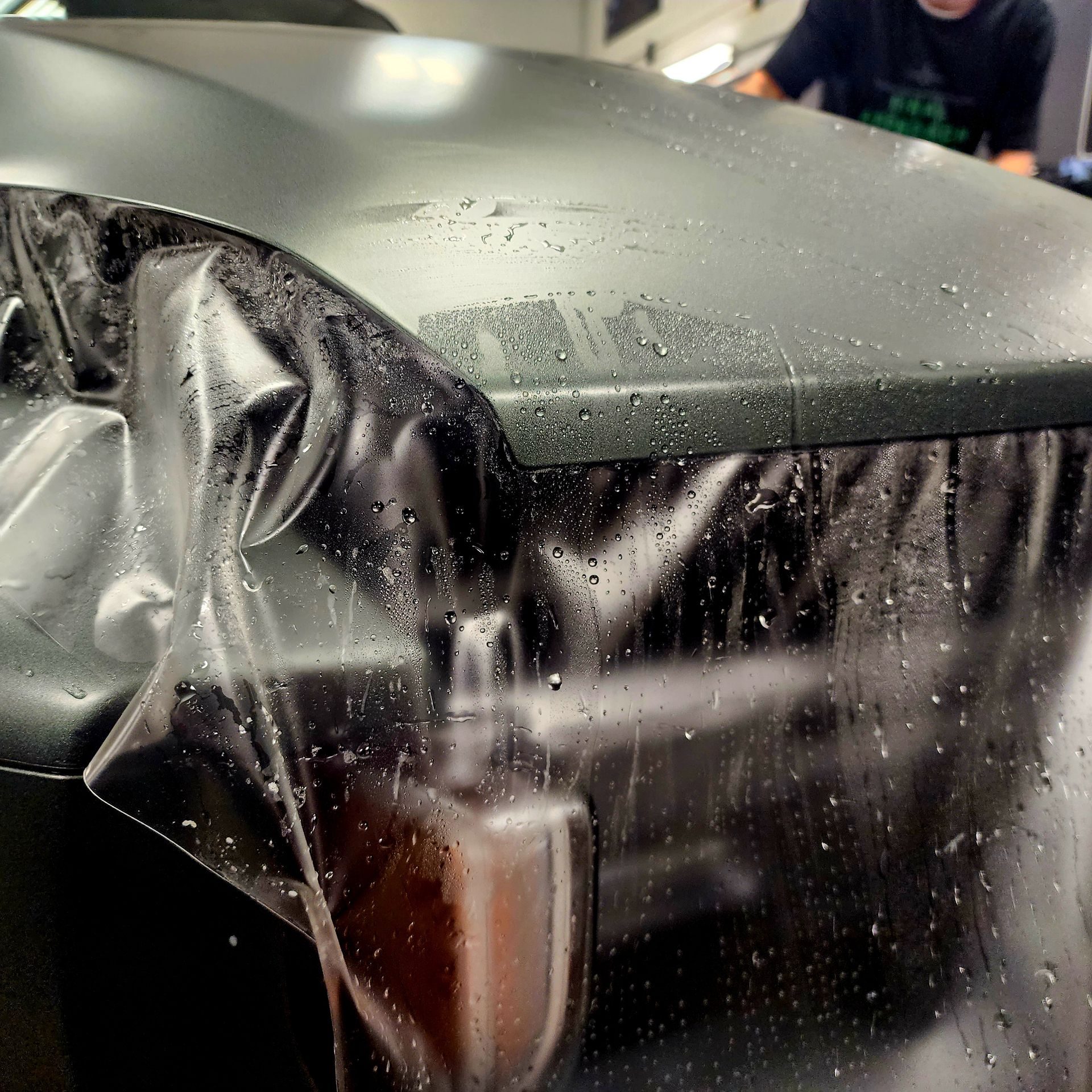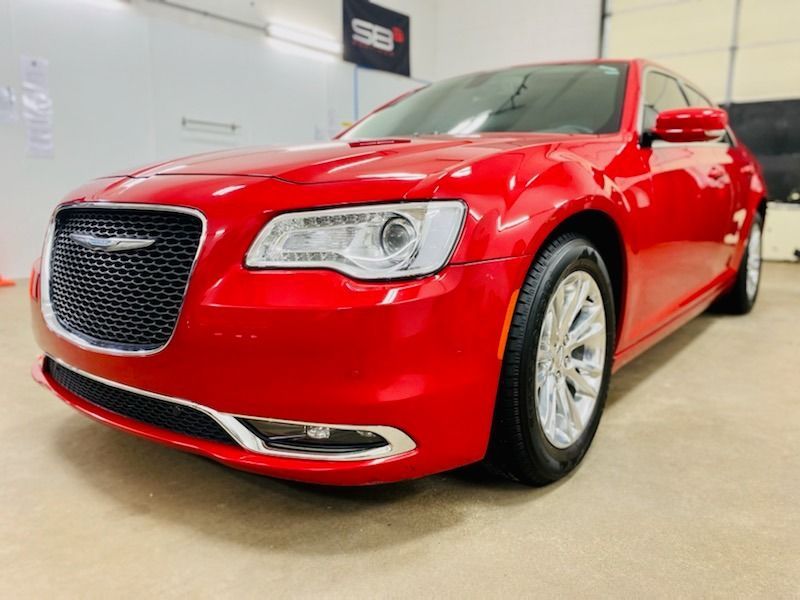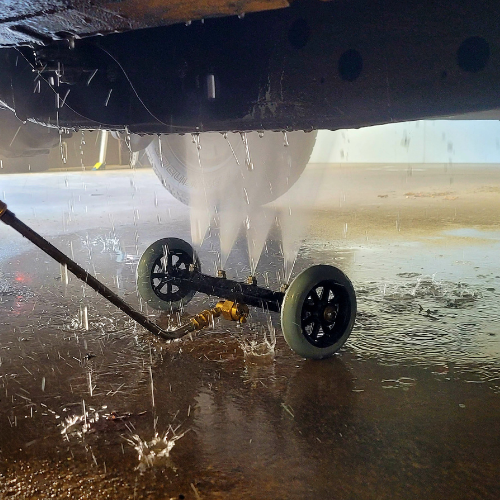How to Clean Paint Protection Film: Ultimate Care Guide
Keeping your vehicle in pristine condition goes beyond regular washing and waxing. If you've taken the extra step to install a Paint Protection Film (PPF) on your car, it's vital to understand the correct cleaning procedures. Many car owners make common mistakes that reduce the longevity of their PPF.
To ensure that your film stands the test of time and maintains its appearance, we've devised a comprehensive guide on how to clean Paint Protection Film correctly. Let's dip right into this world of proper detailing practice for an optimal shine, advanced protection, and a longer lifespan for your loved car!

Steps to Clean Paint Protection Film
Proper care and maintenance of your paint protection film (PPF) is essential to ensuring its longevity and effectiveness in protecting your vehicle's paintwork. Follow these step-by-step instructions to clean your PPF effectively:
- Begin by thoroughly rinsing the PPF with clean water. This helps remove loose dirt and debris from the surface.
- Use a high-quality, pH-neutral car wash soap mixed with water to create a soapy solution. Avoid using harsh chemicals or abrasive cleaners that can damage the PPF.
- Gently sponge or wash the entire area covered by the PPF, ensuring you reach all edges and corners. Use a soft microfiber wash mitt or sponge to avoid scratching the film.
- Rinse off the soap residue with clean water, ensuring all traces are removed from the PPF.
- Pat dry the PPF using a clean microfiber towel or allow it to air dry naturally. Avoid wiping vigorously, as this can cause friction and potentially damage the film.
- Finally, inspect the PPF for any remaining dirt or stains. If necessary, repeat the cleaning process in those specific areas until they are completely clean.
Remember, it's important to follow these steps regularly and maintain a consistent cleaning routine to keep your PPF in optimal condition, providing long-lasting protection for your vehicle's paint.
Pre-Cleaning Preparation
Before diving into the actual cleaning process of your paint protection film (PPF), it's crucial to make the necessary preparations that ensure you achieve the best results possible:
- Park your vehicle in a shaded area or avoid direct sunlight during cleaning. Excessive heat can cause soap and water to dry too quickly on the film's surface, leaving behind streaks and residue.
- Gather all the required cleaning supplies beforehand so that you have everything within reach during the cleaning process. This includes pH-neutral car wash soap, clean microfiber wash mitts or sponges, a hose or bucket of water for rinsing, and several clean, soft microfiber towels.
- Inspect the PPF for any deep stains, bird droppings, or stubborn contaminants that might require additional attention during the cleaning process. If you notice any, it's advisable to use specialized PPF cleansers or consult with a professional detailer for advice on removing them effectively.
By making these pre-cleaning preparations, you're setting yourself up for success in maintaining the quality and appearance of your paint protection film. A well-prepared and organized approach ensures that your cleaning process goes smoothly and avoids any potential mishaps along the way.
Using Water for Initial Cleaning
When it comes to cleaning your paint protection film, it's essential to start with a gentle and non-abrasive approach. The initial step involves using water to remove any loose dirt, dust, or debris from the surface of the film. You can either use a hose or a bucket of water and a soft sponge or microfiber cloth. Gently rinse the film with water, making sure to cover all areas evenly. This process helps to loosen and remove any light contaminants without causing any damage to the film itself.
Advanced Cleaning for Stubborn Stains
Despite regular maintenance, there may be times when stubborn stains or more tenacious contaminants mar the appearance of your paint protection film. In such cases, it's necessary to utilize advanced cleaning techniques to restore its pristine condition. One option is to use a mild soap specifically formulated for automotive surfaces. Dilute the soap in a bucket of water according to the manufacturer's instructions, then apply it to the film using a soft sponge or microfiber cloth. Gently scrub in circular motions, paying close attention to the affected areas. Rinse thoroughly with clean water afterward, ensuring that no soap residue remains on the film.
For more stubborn stains or contaminants that require extra attention, consider using specialized automotive detailing products like gentle cleaners or dedicated paint protection film cleaning solutions. These products are designed to effectively remove more stubborn stains without harming the film's integrity. Follow the instructions provided by the manufacturer for the best results.
Remember, it's crucial to always perform a spot test on a small, inconspicuous area of the film before applying any cleaning solutions or products. This ensures that the product is compatible with your paint protection film and doesn't cause any discoloration or damage.
Maintaining and Preserving Your Film's Quality
To ensure the longevity and quality of your paint protection film, regular maintenance and care are essential. Here are some key steps you can take to keep your film looking its best:
- Washing: Wash your vehicle regularly with a pH-balanced car wash soap or dedicated paint protection film cleaner. This will help remove dirt, grime, and contaminants without compromising the protective properties of the film.
- Avoid Abrasive Materials: Use a soft microfiber cloth or sponge when washing or drying your vehicle. Avoid abrasive materials, such as brushes or rough sponges, as they can potentially scratch or damage the film.
- Avoid High-Pressure Washing: While paint protection films are designed to withstand everyday wear and tear, avoid using high-pressure washers directly on the film. Opt for handwashing or low-pressure rinses instead.
- Protect Against Environmental Factors: Shield your vehicle from intense sunlight for prolonged periods by parking in shaded areas or using car covers. UV rays can degrade the film over time if exposed consistently.
- Regular Inspection: Perform regular inspections of your paint protection film to check for any signs of damage or lifting at the edges. If you notice any issues, seek professional assistance to ensure timely repairs or replacements.
- Seek Professional Help: For deep cleaning, intricate detailing, or any concerns regarding the film's condition, it's advisable to consult a professional detailing service with experience in handling paint protection films. They can provide expert advice and address any specific needs your film may require.
By following these maintenance practices, you can ensure your paint protection film remains in optimal condition, providing long-lasting protection for your vehicle's paintwork.

Common Mistakes and How to Avoid Them
While caring for your paint protection film (PPF), it's essential to be aware of common mistakes that could compromise its performance and longevity. By avoiding these pitfalls, you can maintain the integrity of your PPF and prolong its effectiveness. Here are some common mistakes to watch out for and how to avoid them:
- Using Abrasive Tools: Avoid using abrasive tools or rough materials, such as brushes with stiff bristles or abrasive sponges, when cleaning the PPF. These can cause scratches or damage to the film's surface.
- Not Following Manufacturer's Instructions: Each PPF brand may have specific guidelines for maintenance and care. It's crucial to read and follow the manufacturer's instructions to ensure that you're properly caring for your particular PPF product.
- Skipping Regular Maintenance: Neglecting regular washing, drying, and inspection of your PPF can lead to the accumulation of dirt, contaminants, or damage that may be more difficult to address later on. Make it a habit to maintain your PPF regularly.
- Using Harsh Chemicals: Harsh chemicals, including certain cleaners and solvents, can degrade the protective properties of the PPF. Use only approved cleaners or those recommended by the manufacturer to avoid causing harm to the film.
- Delaying Repairs: If you notice any damage, lifting edges, or other issues with your PPF, don't delay in addressing them. Waiting too long can lead to further damage and may require more extensive repairs or even a complete replacement of the film.
By being mindful of these common mistakes and taking proactive measures to avoid them, you can ensure that your paint protection film remains in optimal condition, delivering long-lasting protection for your vehicle's paintwork.
Final Words
As we wrap up this guide on protecting your paint protection film (PPF), it becomes evident that regular maintenance of PPF will ensure its maximum effectiveness for protecting your vehicle against the elements. At Final Approach Detailing, we understand the value of protecting both its appearance and investment against environmental hazards with expert PPF care services tailored specifically for each vehicle's needs.
Contact Final Approach Detailing today and give your vehicle the long-term care it deserves!





